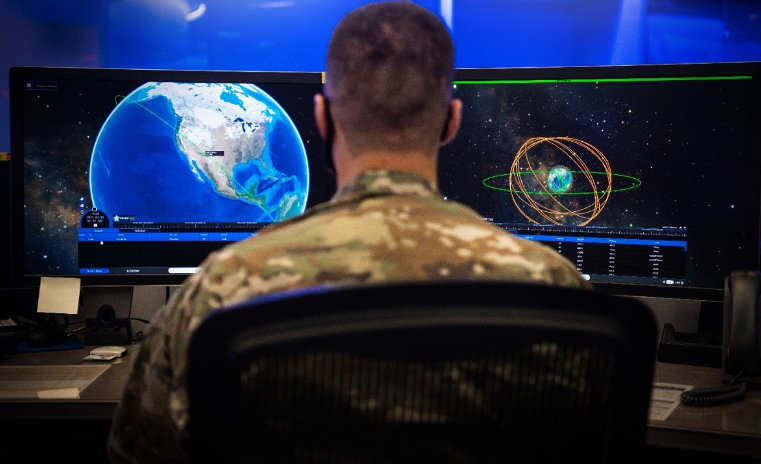Latest News

The National Space Defense Center at Schriever Space Force Base, Colorado. Photo: U.S. Space Force
The defense landscape is undergoing a seismic shift, driven by rapid technological advancements. Small satellites and artificial intelligence (AI) are at the forefront of this transformation, not as tools for tomorrow, but as critical capabilities we need today. These technologies are becoming increasingly intertwined, offering the potential to create a more agile, responsive, and data-driven defense infrastructure.
However, for smallsats and AI to deliver their full potential, we must proactively reshape how we engage with modern threats and streamline the systems that govern their adoption. The current pace of integration is inadequate at best, and our national security will continue to fall further behind in the Great Power Competition until processes are reimagined to reward innovation rather than stifle it.
Small Satellites: The Strategic Edge We Cannot Overlook
Smallsats have rapidly evolved from niche concepts to vital defense assets. These nimble platforms are democratizing space, allowing all nations with limited budgets to engage in offensive and defensive space-based contests. But their value isn’t just in their accessibility — they are essential for building a more flexible, resilient defense architecture. Small satellites are not deploying to replace the traditional, large satellites we’ve relied on for decades; they are here to complement them in a Hybrid Space Architecture, creating a more dynamic and layered approach that ensures resiliency to our space-based capabilities.
While today’s large satellites offer unmatched power and coverage, smallsats bring speed, cost-effectiveness, and replaceability to the table. In a world where threats can change overnight, the industrial and operational agility of smallsats allows for rapid responses to evolving scenarios. Whether it’s intelligence, surveillance, or reconnaissance (ISR), smallsats are already proving they can fill critical gaps and expand coverage in ways that traditional systems simply cannot.
The rise of smallsat constellations — networks of satellites providing continuous coverage — only amplifies their strategic value. These proliferated Low-Earth Orbit (pLEO) constellations provide resilience against adversarial actions, such as anti-satellite (ASAT) weapons, by adding redundancy. This layered defense ensures that our space capabilities remain intact, even under direct attack, by leveraging the complementary strengths of both small and large satellites.
We Need to Rethink Command and Control—Now
But for all the power smallsats bring, their true potential is unlocked by AI. Much like when internet use proliferated with the advent of online shopping and social media, the data these satellites generate is staggering, far exceeding the capacity of human analysts. AI can no longer be looked at as just a tool; it is the essential force multiplier that allows us to process, analyze, and act on mission data at previously unimaginable speeds.
As these proliferated LEO architectures are deployed, optimizing their operational utility and ensuring the security of these networks in real-time is an impossible task for humans, requiring the millions of computations per minute. But for AI, this complexity is trivial. It can seamlessly orchestrate space operations for Space Force commanders, accelerate decision-making and deliver insights across a broader range of sources.
This doesn’t just speed up existing routine mission operations bogged down by manual processes and currently performed by Guardians — it frees them to focus on more important and higher-level strategic decisions that only a human mind is equipped to make. This enables faster OODA (Observe, Orient, Decide, Act) loops, giving joint force leaders the ability to make split-second decisions with high confidence—the advantage that will determine who wins the next generation of warfare.
We Either Adapt or We Die: Space Acquisition Must Change
As transformative as smallsats and AI can be, the U.S. defense acquisition process stands in the way. The current system is impossibly slow and increasingly disconnected from the pace of technological innovation. Our adversaries are unencumbered by Cold War traditions and are moving quickly to adopt and deploy new technologies while we hamstring ourselves with a bureaucratic system that inherently resists the changes so desperately needed.
This is a strategic failure. The slow pace of acquisition deters the integration of cutting-edge technologies and the innovative companies that develop them. Many smaller, agile firms are driving advancements in smallsats and AI, yet they are often discouraged from working with the government due to the overwhelming complexity of the procurement process. We must rethink how we acquire and integrate this tech to ensure we don’t miss out on the disruptive ideas these companies bring–our ability to deploy these capabilities at speed will ultimately determine who wins or loses future space contests. We need a fast and relevant acquisition system that reflects this urgency — a system that prioritizes winning rather than blind allegiance to outdated process.
AI Is the Future — But Only If We Act
The combination of small satellites and AI is not a future vision — it’s the present reality, and it’s here to stay. Together, these technologies enhance ISR, predictive analysis, and real-time decision-making, creating a defense capability that is more resilient, agile, and effective. Our adversaries are not waiting for us to catch up, and neither should we. The time to act is now.
To fully harness the power of smallsats and AI, we must embrace an entirely new mindset — one that prioritizes speed and innovation. This is not just about maintaining dominance, it’s about survival in a rapidly changing world. We cannot allow an inability to adapt today to be the root cause for a defeat tomorrow. The tools are in our hands, it’s time to use them.

 Charles Beames is an aerospace investor, Chairman of the SmallSat Alliance and York Space Systems, and the Executive Chairman of SpiderOak and TrustPoint Inc.
Charles Beames is an aerospace investor, Chairman of the SmallSat Alliance and York Space Systems, and the Executive Chairman of SpiderOak and TrustPoint Inc.
Dr. Angel Smith is a seasoned executive in the space and intelligence sector. She is the Executive Director of the SmallSat Alliance and currently serves as General Manager, Strategic Global Enablement at Microsoft.
Get the latest Via Satellite news!
Subscribe Now